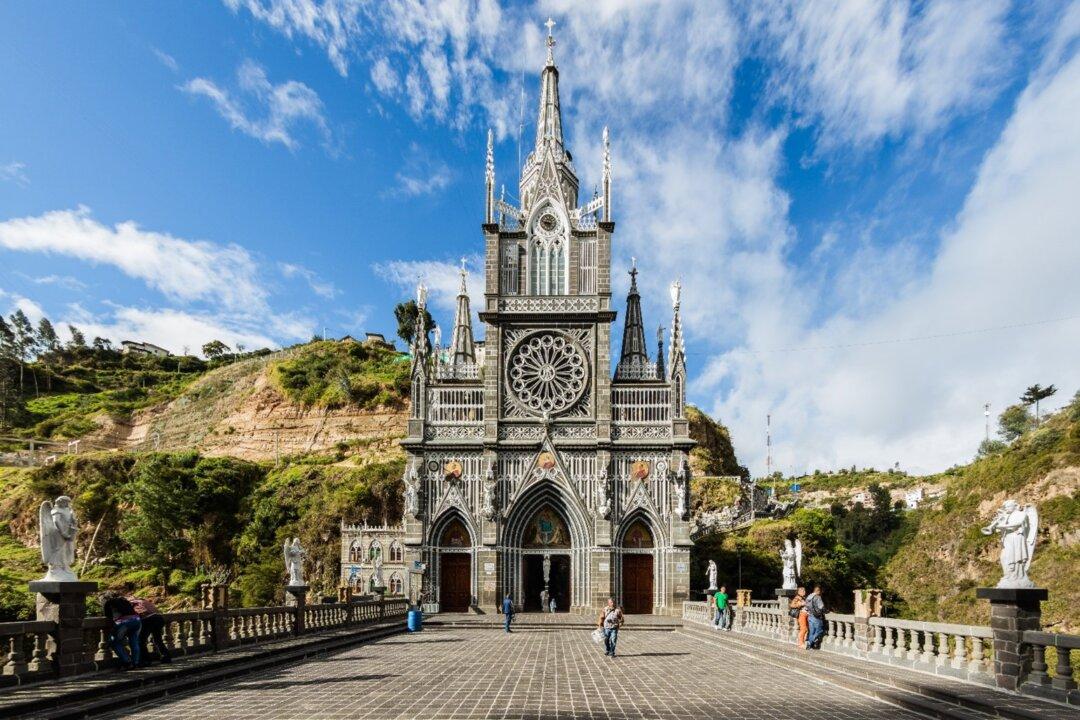Inside the canyon of the Guáitara River in Colombia, South America, rests a breathtaking example of Gothic revival architecture: the Las Lajas Sanctuary. This popular spiritual destination celebrates the reputed appearance of the Virgin Mary at the site.
In 1754, a woman named Maria Muneses de Quiñones and her mute-deaf daughter Rosa were caught in a storm, and found shelter in slabs of “lajas,” a variety of local shale, in the Guáitara River canyon. In the refuge, Rosa supposedly exclaimed that she saw the Virgin Mary above one of the slabs. A series of miraculous reports followed and, in the same year, a simple shrine from wood and straw was built.






